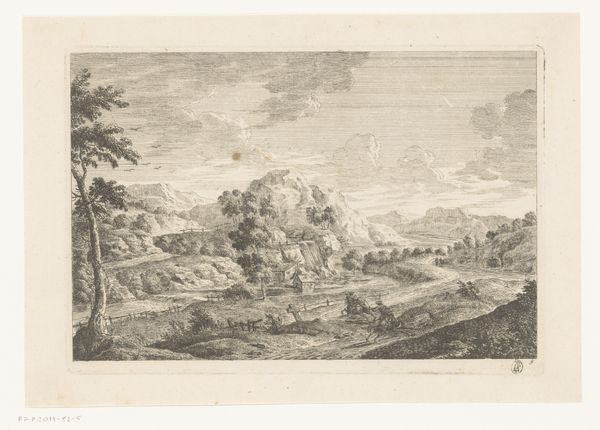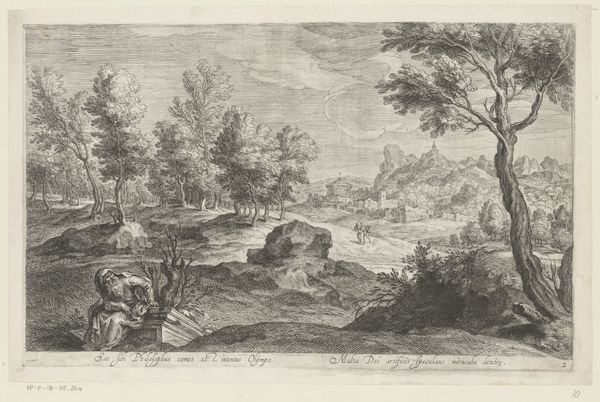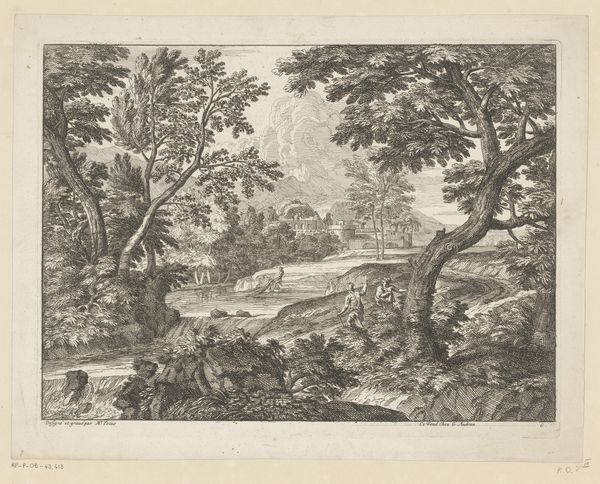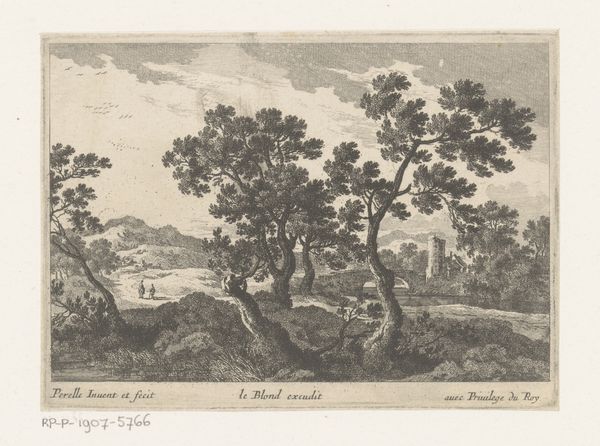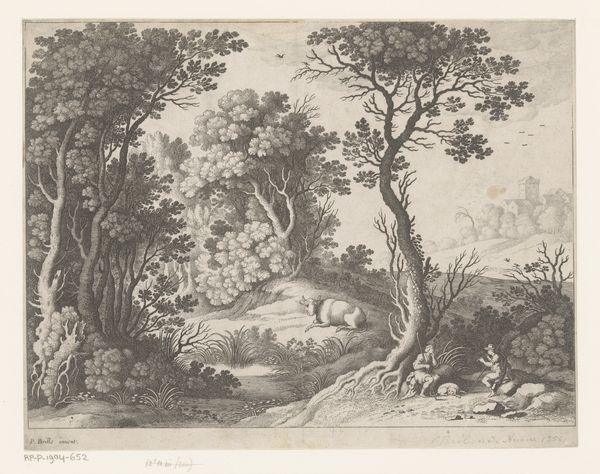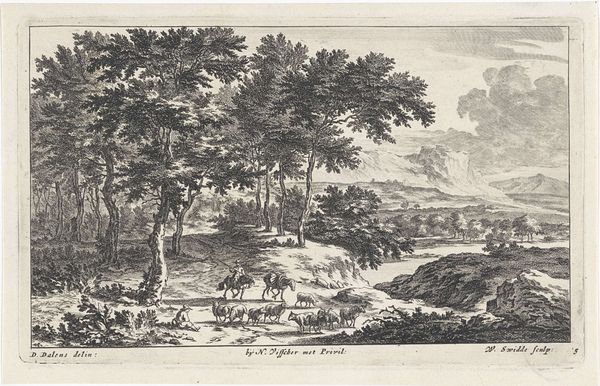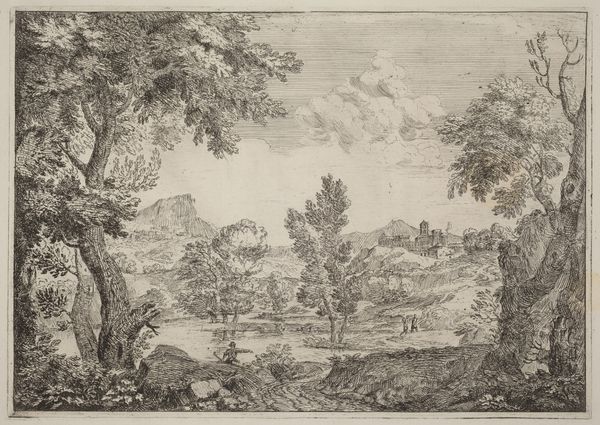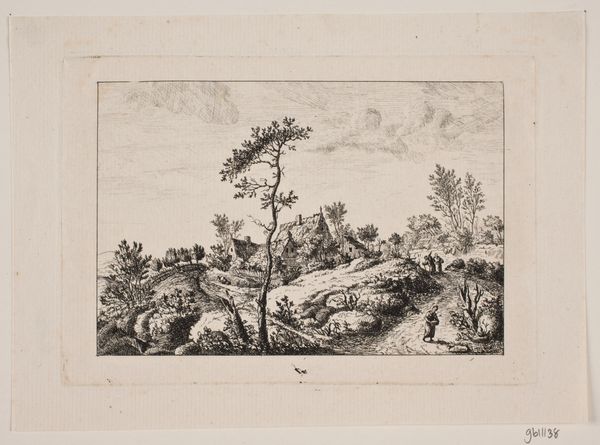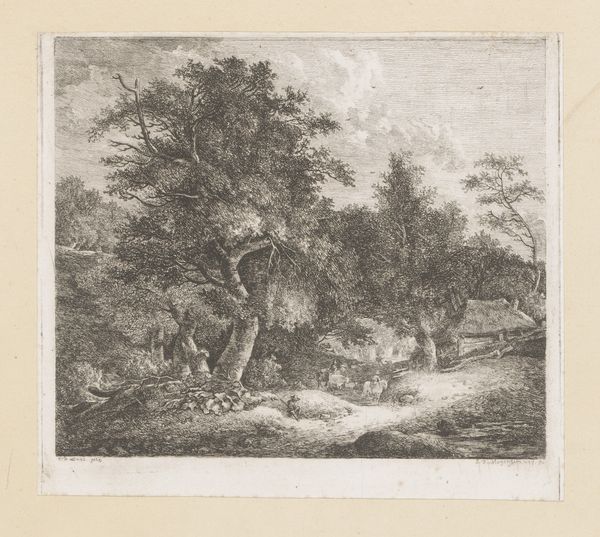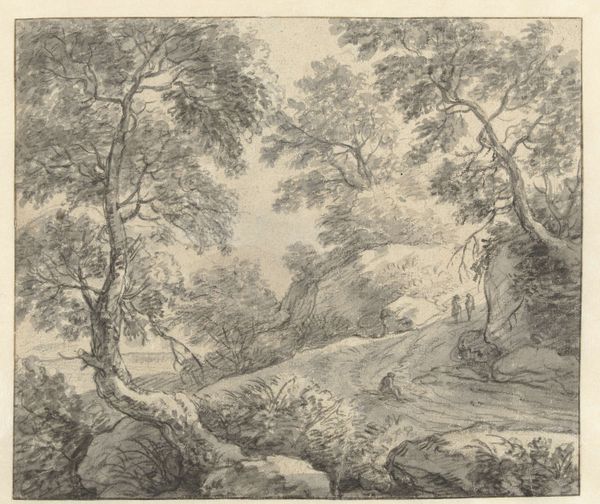
print, etching, engraving
#
ink drawing
#
baroque
#
pen drawing
# print
#
etching
#
landscape
#
history-painting
#
engraving
Dimensions: height 207 mm, width 299 mm
Copyright: Rijks Museum: Open Domain
Editor: Here we have Nicolas Perelle's "Cephalus en Procris," created sometime between 1613 and 1695. It's a print, employing etching and engraving techniques, currently residing in the Rijksmuseum. I’m immediately struck by how the foreground trees frame a rather expansive landscape. What do you see in this piece, considering its formal qualities? Curator: The success of this work resides in Perelle’s understanding of spatial construction. Note the contrast in textures: the intricate foliage in the foreground against the smoothly rendered distant mountains. Consider how this sharp contrast achieves depth. Moreover, observe the balanced distribution of light and shadow, structuring a visual hierarchy that directs the viewer's eye throughout the landscape. Editor: That interplay between foreground and background, and the texture variations you mention, create such a dynamic viewing experience. Does the Baroque style itself play a role in this dramatic presentation? Curator: Indeed. The Baroque emphasis on movement and emotion finds its expression here through the dynamic arrangement of the landscape elements. Are you referring to the figures of Cephalus and Procris? Their placement draws one into the scene and alludes to the larger narrative at play. Yet, it's crucial to acknowledge how Perelle prioritized formal arrangements above conveying narrative detail. How would you categorize the use of line in this piece? Editor: Given the meticulous detailing, I'd venture to say the use of line is predominantly descriptive, with subtle shifts in weight to delineate form and create tonal variations. I’m seeing how carefully the artist has balanced detail and form to construct the overall composition. Curator: Precisely. Perelle’s focus on visual composition rather than precise mythological content reinforces his emphasis on the aesthetic possibilities within landscape art. It’s in the formal arrangements that this piece truly resonates. Editor: That's fascinating! I appreciate your insights on how to see beyond the immediate subject matter and dive into its compositional artistry.
Comments
No comments
Be the first to comment and join the conversation on the ultimate creative platform.
